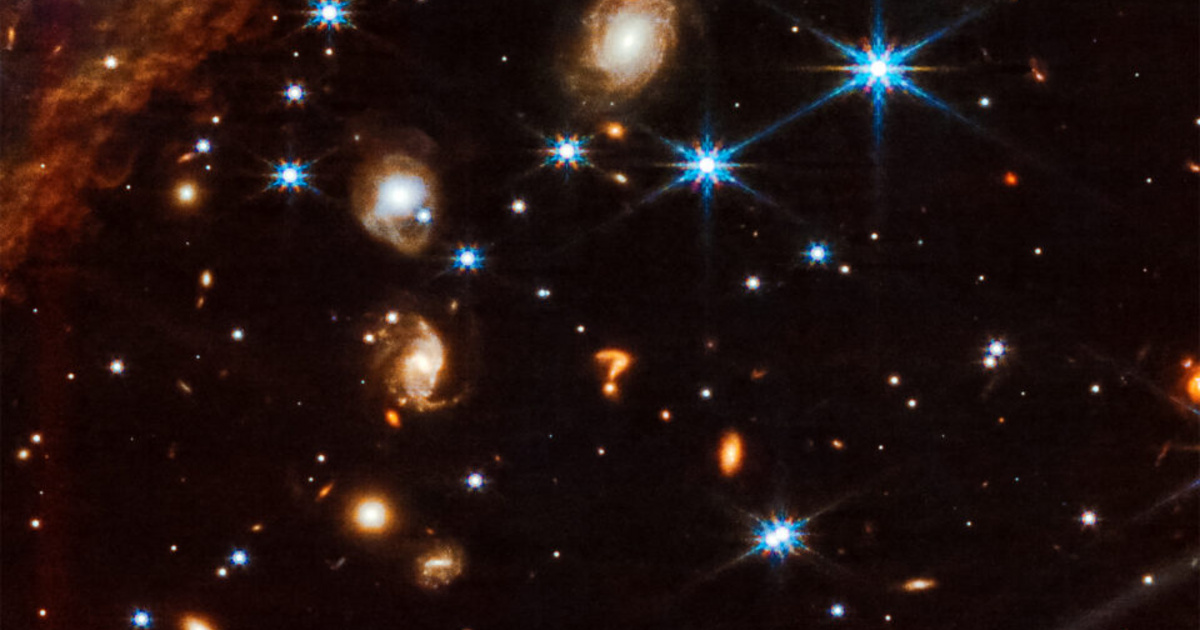Since its launch in December 2021, the James Webb Space Telescope has provided many answers to questions about the origin of the universe, but it has also raised many new questions. The space telescope has sent back amazing pictures of the universe many times before, but now one of them has returned to Earth, confusing even the most experienced astronomers.
In the image recently released by NASA, a huge number that looks like a question mark can be seen.
As Gregory Brown, an astronomer at the Royal Observatory in Greenwich, points out, ever since astronomers turned their eyes to the stars, they were looking for patterns of what they found there. Thanks to this, many interstellar nebulae are named for their apparent shapes, but with the development of science and technology, it turns out in many cases that the true shape of objects has nothing to do with what they got their name from.
While previously only a specially shaped spot reminiscent of a Christmas tree or a witch’s head was seen, today binoculars and space telescopes have advanced to the point that we are able to observe complex clouds of gas and dust. One day, perhaps, we will be able to look at this galaxy with telescopes of such quality that even this relatively simple shape will completely disappear from the details.
Brown explained.
added Stephen Wilkins, an astronomer at the University of Sussex.
It is not yet known what exactly it could be
Although it is still not clear what the astronomical object in the form of a question mark could be, its color and shape already provide some clues. According to representatives of the Space Telescope Science Institute (STScI) in Baltimore, which controls the operation of the James Webb Space Telescope, it is likely a distant galaxy, or perhaps interacting galaxies, whose force on each other causes the distorted question mark-like shape.
Matt Kaplan, assistant professor in the Department of Physics at Illinois State University, came up with a similar explanation recently. In his view, the two separate parts lead to the conclusion that the image may contain merging galaxies, he writes Earth.com.
“Looking at the colors of some of the other background galaxies, this seems the most plausible explanation. Despite the chaos that mergers can cause, I think it could be very typical of the evolution of the shape shown in the image.”
The most powerful astronomical instrument to date
The largest and most powerful astronomical observatory to date, the Webb Telescope is a six-and-a-half-meter telescope that continues to explore the universe as the successor to the Hubble Telescope. Astronomers expect Webb’s $10 billion program to discover the oldest stars and galaxies in the universe as it searches for signs of life.
As we wrote, the space telescope was launched in December 2021, but the first images had to wait until July 11, 2022. The images were sent back by JWST from the so-called second Lagrangian point, about 1.6 million kilometers from Earth, a region of interstellar space where The different effects of gravity balance each other out, allowing the body to remain at rest.
Interestingly, the European Space Agency’s Euclid Program space telescope, which was launched in June from the Kennedy Space Center in Florida, will soon begin operating in the same region of outer space.












































